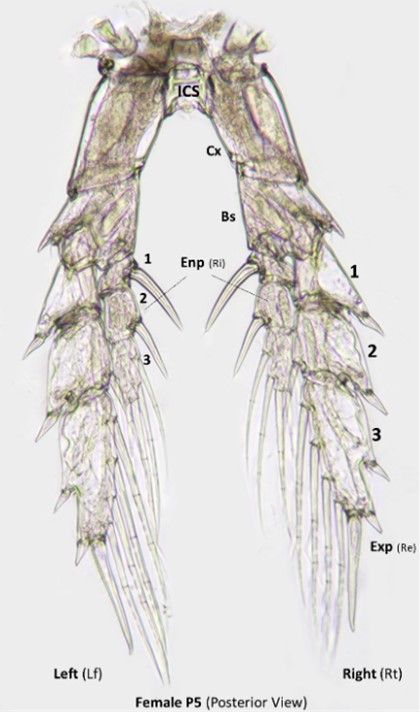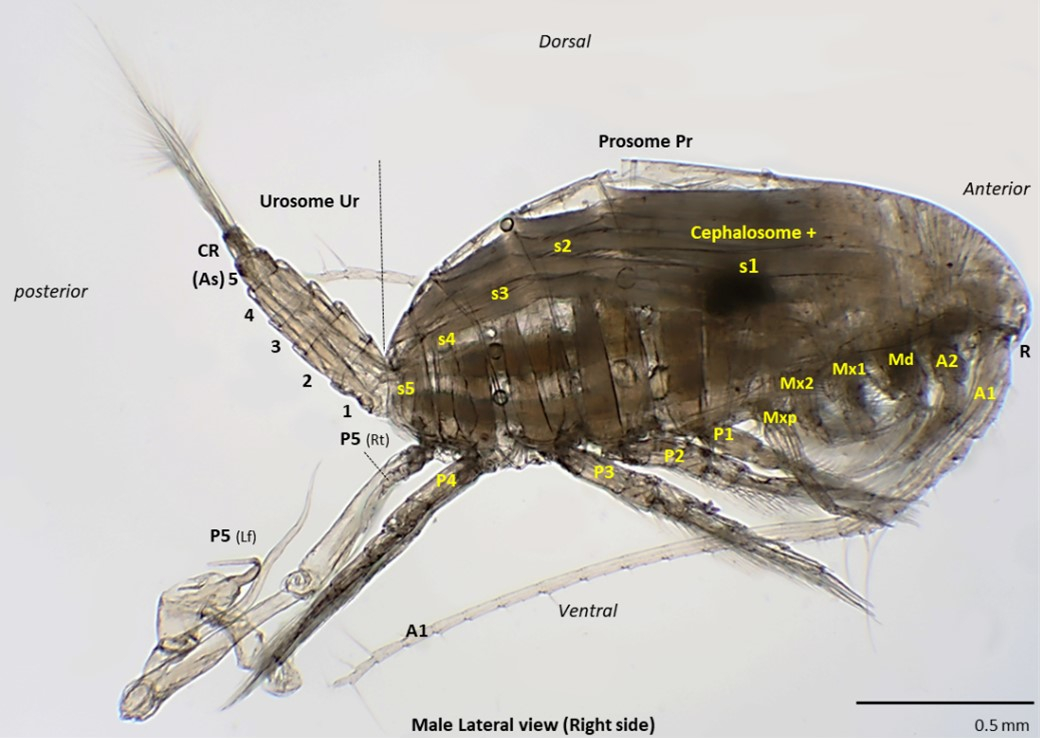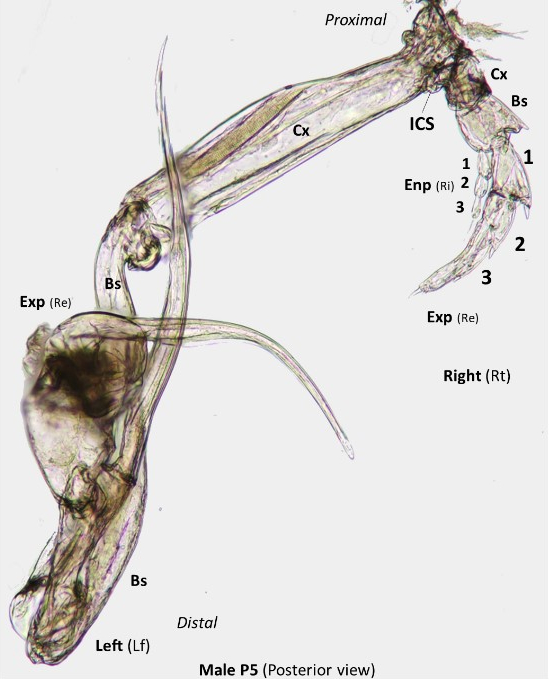Digital Keys to the Calanoid Copepods
About the Calanoid Copepods
Knowledge of the external anatomy of calanoid copepods is needed if one is to use the keys successfully. The calanoid copepod body is divided into two major parts: the prosome (Pr) and the narrower urosome (Ur) with the major articulation occurring between the fifth pedigerous and the genital somite (gymnoplean position). The prosome encompasses the cephalosome and 5 pedigerous somites (s1-s5). The urosome is formed from 4 free somites in female and 5 free somites in male (although there may be fusions between these somites). The last free somite constitutes the anal segment (As) and is terminated by a pair of caudal rami (CR). The female genital double-somite (GDS) is composed of the fused genital somite and the first abdominal somite. The rostrum (R) is usually fused to the cephalosome. The paired limbs of the cephalosome are, from anterior to posterior, antenna 1 (antennule-A1), antenna 2 (antenna-A2), mandible (Md), maxilla 1 (maxillule-Mx1), maxilla 2 (maxilla-Mx2), and maxillipeds (Mxp). When detail of the morphology of the limbs is referred to in the key, the part concerned is indicated by a red box. Swimming legs P1-P4 are biramous with a basic 3-segmented plan for each ramus (although some of these segments may be fused) and branches of each pair of legs are joined by an intercoxal sclerite (ICS). The fifth legs (P5) are sexually dimorphic. Sometimes the female fifth legs are absent, but when present, can be biramous or uniramous; they are always present in male, and can be of a simple uniramous form or large, complex and highly asymmetrical.
Biramious Pedigerous sections: Coxa (Cx), Basipodite (Bs), Endopodite (Enp) and Exopodite (Exp), also found as: ‘Rame interne (Ri)’ and ‘Rame externe (Re)’ respectively in old nomenclature.



